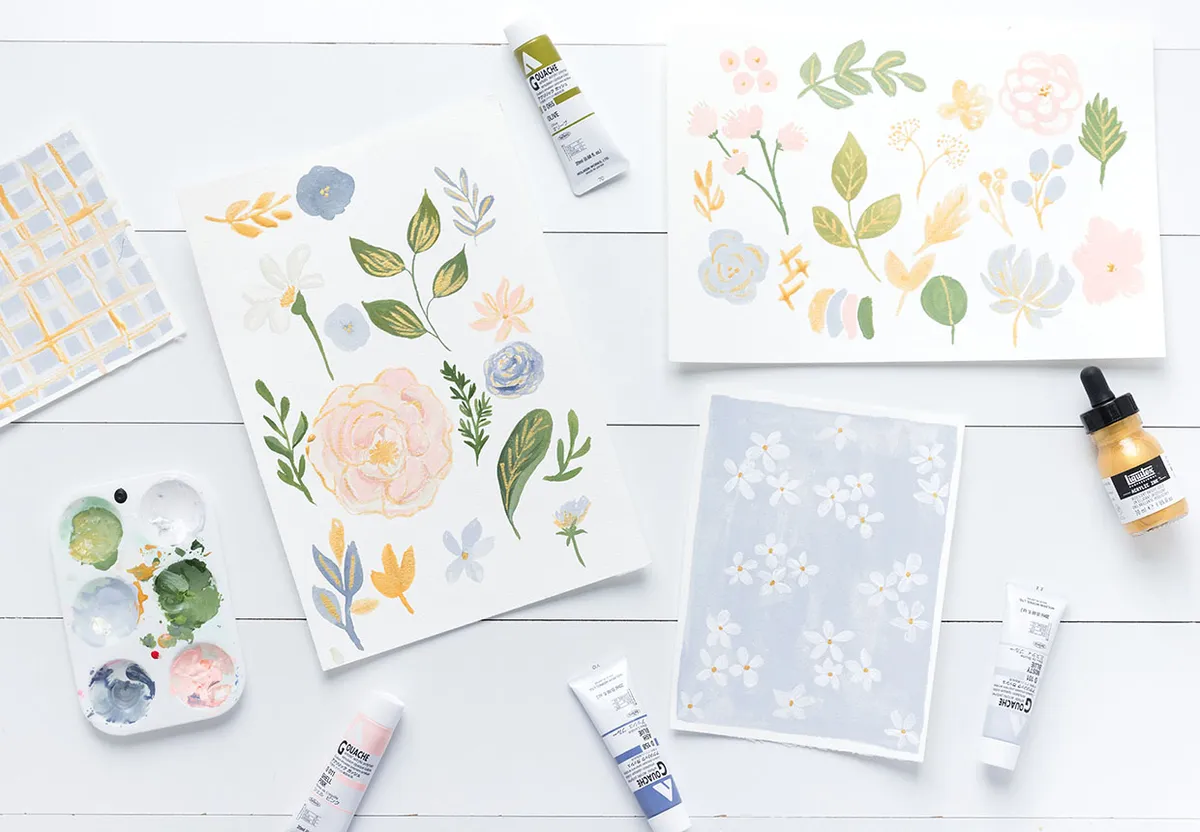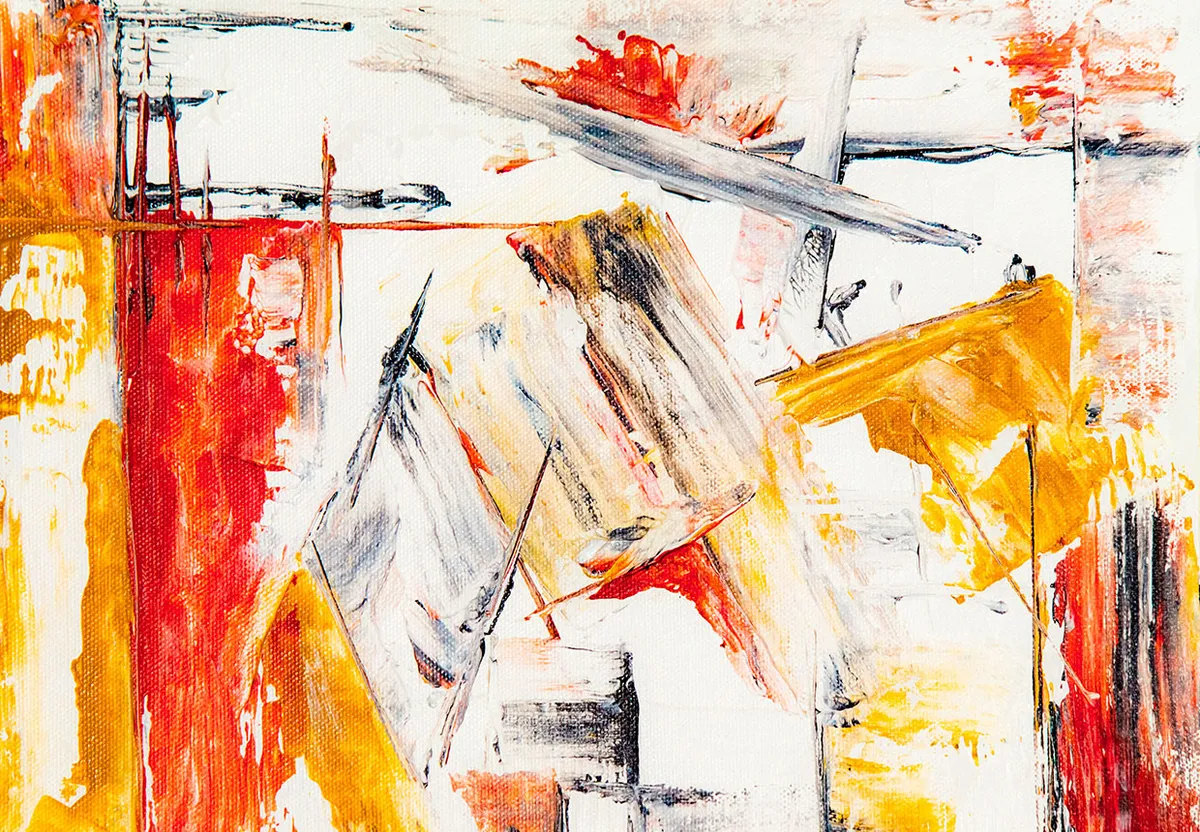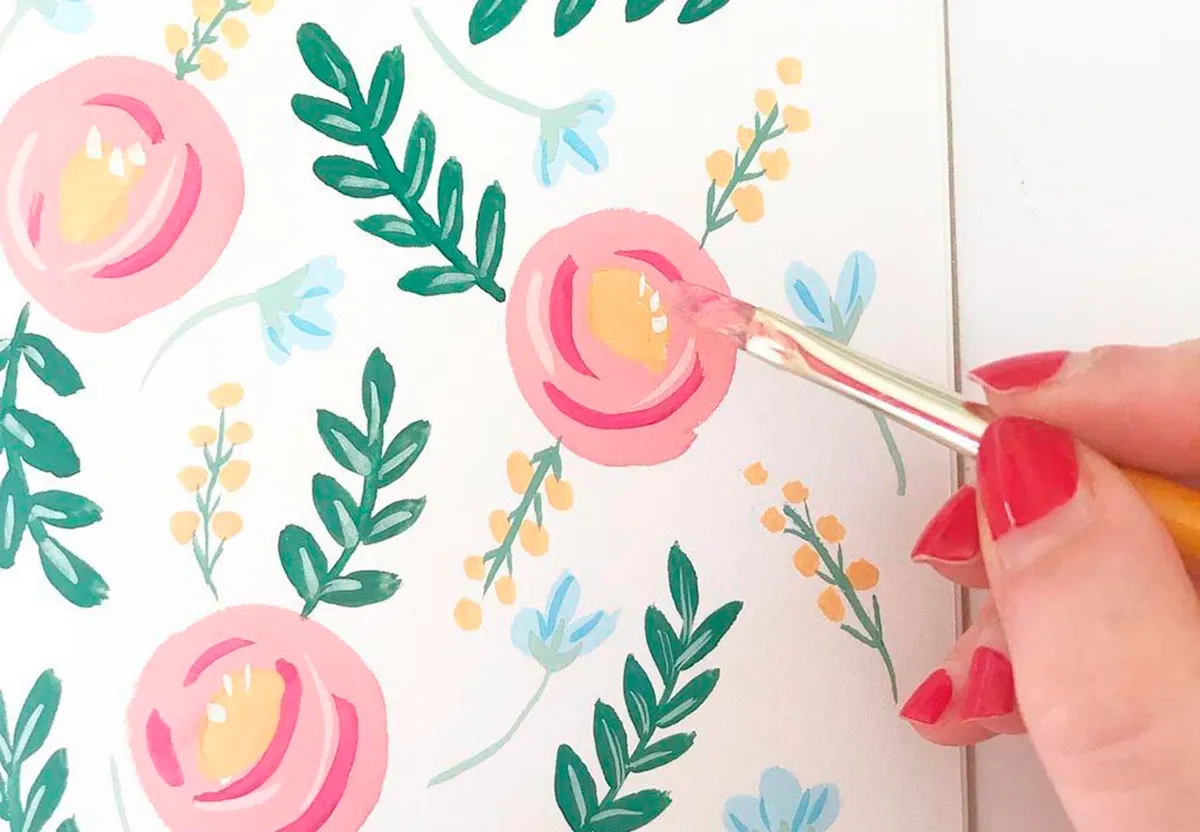Are you Team Acrylic or Team Gouache? Both mediums have their advantages and disadvantages, but most people tend to have a favourite.
Acrylic is a long-lasting and forgiving medium, while gouache is favoured by illustrators and those who love its matt finish.
Both come in a massive selection of beautiful colours and dry quickly, so they’re a fantastic option for artists who like to work swiftly.
It’s a good idea to experiment with both to see which you like the most. The best paint for the job may vary depending on the results you’re aiming to achieve in your art.
In this guide, we’ll weigh up the pros and cons of both so you can make up your own mind!
What’s the difference between gouache paint vs acrylic?
Gouache and acrylic paint are very different materials. Acrylics are made using pigments combined with water and a polymer (plastic) binder. It can be thinned with water and dries quickly.
Traditional gouache is also water-based, but the pigment is held together using gum arabic (a kind of tree sap).
You can also try using acrylic gouache, which is a type of gouache which uses an acrylic binder. It has the best qualities of traditional gouache – and it’s waterproof, so it can’t be reactivated with water.
Gouache vs acrylic paint: which is best?
Gouache paint pros

1. It’s perfect for illustrations
Gouache has been a popular medium for illustrations for decades – with good reason. It dries with a smooth, matte finish which creates a 2D effect.
This is extremely effective for illustrations and it looks highly professional. It’s easy to photograph gouache paintings, as the surface isn’t shiny.
2. Get an opaque finish
Gouache is opaque, so it’s good for creating bold blocks of colour in your paintings. It also looks very even when it dries; you won’t see many visible brushstrokes.
3. Combine gouache with watercolours
Gouache and watercolours can both be mixed with water and complement each other well. Unlike gouache, watercolour paints are translucent and can produce luminous art work.
Pairing gouache with watercolours can add interest to your artwork. Many watercolour artists keep a tube of white gouache to hand, as it can be used to create clear white details on top of existing layers of paint.
4. Achieve rich colours
Gouache paints are packed with pigment, resulting in vibrant paintings. The ability to create strong shades is a big part of gouache’s appeal.
This medium can be used for bright colours, but it also looks brilliant in paler shades and pastel tones.
5. Blend your paints with water
Gouache paint can be blended and thinned with water, so there’s no need to buy any additional mediums.
You can also reactivate dried gouache paint by adding a little water. This means that you can easily rework areas of your painting if you need to.
6. Speedy drying time
Many painting mediums take a long time to dry (oil paints can take weeks!), but gouache dries very quickly.
This makes it ideal for painting on the go or anyone who wants a short art session.
7. Make mixed media pieces
We’ve already covered watercolours, but gouache works perfectly with a wide range of mediums.
Once dried, you can easily draw on top of gouache due to its matte texture. As it’s slightly rough, it provides a good surface for materials such as pencils, charcoal or even markers. Experiment and see what works for you!
Gouache paint cons
1. It dries too fast!
A short drying time can be both a benefit and a disadvantage. It cuts down on the waiting time, but it means that your paints may dry out too quickly during a long painting session.
However, there are a few things you can try to tackle this problem. There are special stay-wet palettes which will prevent your paints from drying out too fast. You can also mist your paints with water or re-wet them as you go.
2. Reactivating paint makes layering difficult
As we’ve previously mentioned, gouache paints can be reactivated with water. This means that when you apply a fresh layer of gouache, it can activate the layer underneath.
This can sometimes lead to your colours looking muddy and less vivid than you would like.
You can avoid this problem by using acrylic gouache instead of traditional gouache, as this can be layered more easily.
3. Colours change as they dry
Gouache lightens as it dries, which can make it challenging to match colours as you paint. With a little practice, you can learn to compensate for this and mix colours a shade darker than you usually would.
4. Gouache can look uneven
Take care when mixing water with your gouache paints: if you add too much then your paintings will have a streaky appearance.
This will take a little practice to get right.Remember, you can always add a second layer of paint over the top to improve the coverage if it looks patchy.
5. It’s brittle when dry
Dried gouache paint can be brittle, so it needs to be handled with care. It can also crack if the paint is applied too thickly.
The best gouache paints revealed
If we’ve convinced you to give gouache painting a go, you can stock up with Gathered’s recommendations for the best gouache paints to buy.
Acrylic paint pros

1. It’s very versatile
Acrylic paint is much more versatile than gouache. It can be thinned down to the consistency of watercolour paint or brushed thickly onto a canvas. You can change the thickness even further by blending acrylic paints with mediums.
2. Paint in lively shades
Acrylic colours are available in a huge selection of intense shades. These colours are very durable and won’t fade over time.
3. Quick drying time
Acrylic paints are also fast drying – even faster than gouache. This makes it an ideal medium for artists who like to work quickly and don’t want to spend time literally watching paint dry.
4. Layer paints with ease
Acrylic paint can’t be reactivated with water, unlike gouache. That means that once a layer of acrylic paint has dried, it’s permanent.
You can paint over the top without worrying that the underlying colour will mix with the new shade. If you make a mistake, then it’s easy to correct or conceal it by painting over the top.
5. Can be used on a wide range of surfaces
Acrylic paints are most commonly used to paint on paper or canvas, but they can be applied to a wide variety of other surfaces including wood, glass and fabric.
Some types of acrylic paint are designed to be mixed with a printing medium and used for screen printing techniques.
If you’re looking for a fun acrylic painting project to try, get arty with these colourful DIY painted plant pots.
Acrylic paint cons
1. Dries too quickly
Acrylics and gouache are both fast drying mediums, which can be both a pro and a con! Acrylic paint dries so quickly that blending can be difficult.
However, you can delay the drying process by mixing your paint with a slow drying medium, giving you more time to produce your masterpiece.
2. Colours darken as they dry
Gouache lightens as it dries, but acrylic paint can darken making it tougher to match shades as you work.
Compensate for this by adding a tiny amount of white to your colours and see what a difference it makes!
3. Acrylics can stain
If you’ve ever got acrylic paint on your clothes, then you’ll know how tough it is to get out! We’d recommend wearing old clothes while you paint so you don’t ruin your favourite sweater.
Spilled acrylic paint on your clothes or dragged your sleeve through the paint? There are a few things you can try to clean it up including denatured alcohol, rubbing alcohol and acetone.
Gouache paint is much easier to remove from your clothing – a little warm water and soap should do the trick.
4. Can’t be reactivated
Gouache can be reactivated using water, which does allow you a degree of freedom. You can return to a section of a paint for additional blending and reworking.
Unfortunately that’s not possible with acrylic paints. Once they’re dry, that’s it. As we’ve mentioned, you can slow the paint’s drying time by mixing them with acrylic mediums. We’d also recommend having a stay wet palette to hand to keep your paints usable for longer.
Head over to our paint palettes guide for Gathered’s top picks.
5. It can ruin your paint brushes
When you work with acrylic paints, it’s important to keep your brushes clean and rinse them thoroughly with water after use.
If acrylic paint dries on the bristles, it can render them stiff and completely unusable.
Clean the brushes regularly as you work and keep some kitchen towel or paper on hand to remove any paint residue. This will help to keep your paint brushes in good shape for years to come!
Gouache vs acrylic: choose your fighter
Acrylic and gouache are both very popular paint mediums and each has its own merits, depending on the results you want to achieve.
There are times when acrylic is the best option and occasions when only gouache will do. Every artist has their own style, so it’s worth testing both mediums to see which you prefer.
Compared to gouache, acrylic paint is more forgiving as it’s easier to fix your mistakes. This makes it a good option for beginners.
On the other hand, gouache is better for illustrations and works well when teamed up with watercolours.
Paint up a storm with our easy gouache painting ideas
Gouache paints are extremely versatile and can be used to paint everything from landscapes to self portraits.
Relax and enjoy a creative moment with Gathered’s simple gouache painting ideas.

